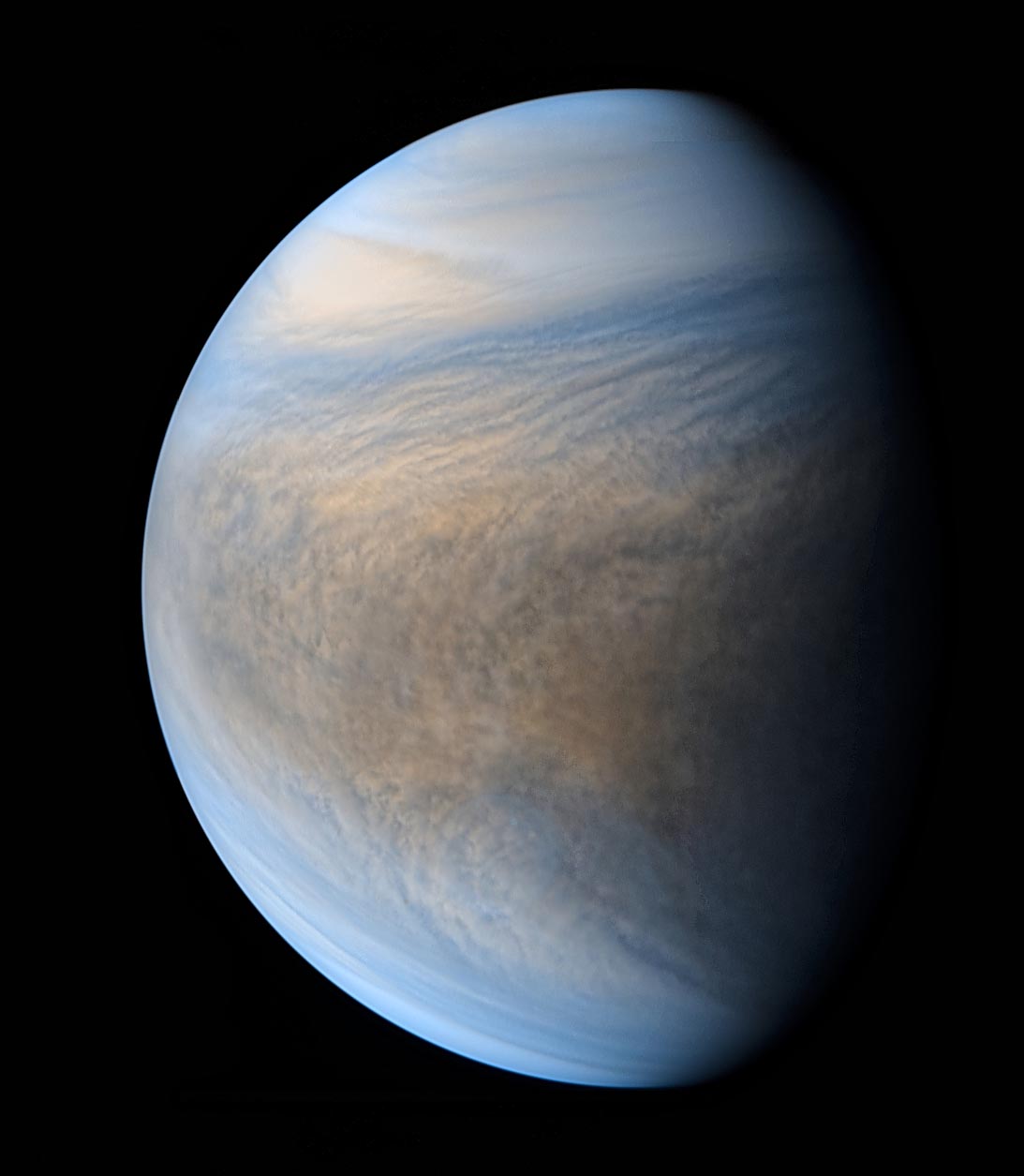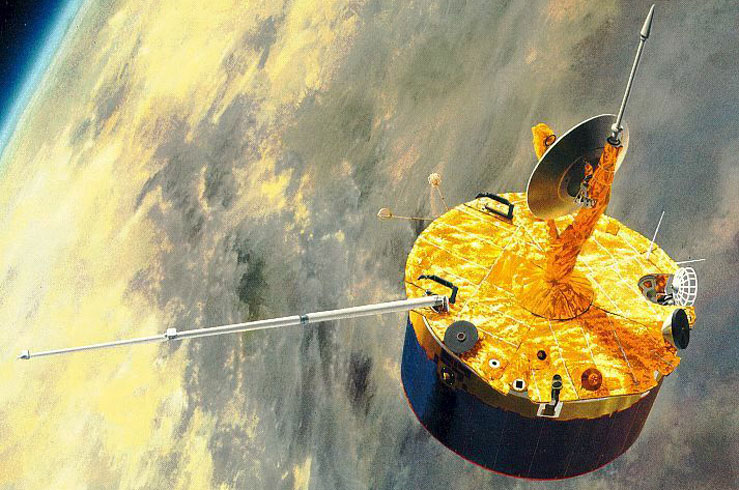On September 14th, an international team of scientists led by Jane Greaves (Cardiff University) published an unexpected result in Nature Astronomy: the detection of phosphine gas in the relatively cool cloud decks of Venus.

JAXA / ISAS / DARTS / Damia Bouic
Since then, the scientific community has been scrambling to verify the result. The Mars community has even gotten in on the fun, back-checking ExoMars spectral data for phosphine, though they didn’t see any.
But scientists have now seen the signal in another unexpected place: Legacy data collected by the Pioneer mission in 1979.
Fact-checking the Phosphine Signal
A flurry of activity accompanied the announcement of phosphine at Venus. To confirm the phosphine signal, astronomers must make more spectroscopic observations, but most astronomers aren’t yet willing to do that until the data reduction by Greaves’ team has been inspected for errors. On September 17th, Natalie Batalha (UC Santa Cruz) even issued a challenge to the astronomy community in a public Facebook post, writing “Go forth and scrutinize!”, complete with a listing of the pertinent data portals.
There is no doubt that scientists are already scrutinizing: Various “fact-checking” projects are underway at many major research institutions. In the meantime, some researchers are sufficiently convinced by the preliminary detection to begin exploring other aspects of the discovery, such as posing additional abiotic production methods, creating more complete models of the Venusian atmosphere, and digging through archival data to look for previous signs of phosphine that had been missed.

NASA
This last approach has already yielded some interesting results. NASA’s Pioneer Venus 2, launched in 1978, had an entry probe with a mass spectrometer which was used to determine the composition of the atmosphere as it descended to the surface. More than 40 years later, another look at this legacy data has revealed evidence of phosphine in Venus’s cool cloud decks, exactly where Greaves detected it.
The team, led by Rakesh Mogul (Cal Poly Pomona), has already posted their preliminary analysis on the arXiv preprint server. Although their results do not address phosphine’s abundance and do not enable conclusions regarding its source, the results are important because not only did they see features consistent with phosphine, but other related species as well.
“We knew that people were going to question the veracity of the signal,” Mogul said. “So I was inspired to look for other sources. A colleague sent me the data from Pioneer. Then I started thinking about how phosphine would act inside the spectrometer, if it would fragment, and what those fragments would look like.”
Remote spectroscopy works from afar by examining light as it shines through various gases. But mass spectrometry is necessarily in situ: the instrument vaporizes a sample inside a chamber, and then sorts the ionized remains by mass-to-charge ratio. This thus gives a description of the elements present in a sample. When Mogul looked at the Pioneer mass spectrometer data, he found four out of the five spectral lines that one would expect in the presence of phosphine.
“The very first cool result was seeing atomic phosphorus,” he said. “And then the other related molecules, including a deuterated species. This is to be expected on a planet that is hydrogen poor and makes it that much more likely that phosphine is actually present.”
More Than Phosphine
They also found signs of several other, previously unnoticed chemicals, including methane and ammonia. Like phosphine, these molecules might be potential biosignatures, because they are considered to be incompatible with the oxidizing atmosphere of Venus and because no obvious abiotic production route is currently known.
But how is it possible that these interesting detections have been overlooked for 40 years?
“It could be because I’m totally wrong,” Mogul said. “But looking back at the literature, I wonder if there wasn’t a reluctance to find anything out of equilibrium. Their efforts were focused on bulk gases, and how abundances changed across altitudes. Perhaps they were just waiting for other data to support the evidence of disequilibria in the minor species. And maybe this is the time for it.”
 0
0









Comments
You must be logged in to post a comment.